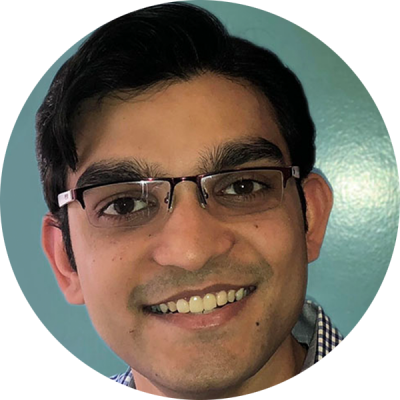
Kousik Sundararajan
Understanding and manipulating bacterial growth is important for medical and pharmaceutical advances. How a bacterial cell divides is a complex biological process driven by the coordinated efforts of more than two dozen proteins. The most essential and conserved of these proteins is FtsZ, which forms a ringlike scaffold called a Z-ring. The Z-ring serves as a platform for the recruitment and organization of the division machinery. I discovered that the structure of the Z-ring and the assembly properties of FtsZ directly regulate cell division proteins. I also discovered and characterized a previously unknown link between FtsZ and the action of cell wall enzymes required for cell division—these enzymes are targets of penicillinlike antibiotics. In addition to providing mechanistic insights into the essential process of bacterial cell division, my project identifies molecular targets for manipulating bacterial cell growth. The cell-free reconstitution method that I developed to study FtsZ can be applied to study other multiprotein machineries that are essential for processes not just in bacteria but also more complex organisms, including humans.
I did my research in Dr. Erin Goley’s lab, in the Department of Biological Chemistry. I also performed a significant portion of my experiments in Dr. Kiyoshi Mizuuchi’s lab at the National Institute of Diabetes and Digestive and Kidney Diseases.
Questions & Answers
Why did you choose Johns Hopkins for your work?
Johns Hopkins has a nurturing environment and graduate student-friendly lab atmosphere. Coming from an engineering background (B.Tech in Biotechnology) from the Indian Institute of Technology in Madras, India, I wanted to apply my training to understanding fundamental processes in biology and prepare for a career in academia. The appreciation for basic science research, fine balance of independence, and constant availability of mentorship, supportive peers and a large alumni network made Johns Hopkins an obvious first choice for my graduate training.
What does receiving this award mean to you personally and professionally? Do you have any connection with the particular award you received?
This award would be one of the first recognitions for my graduate research outside my field of work. It encourages me to keep exploring my scientific curiosities and validates my scientific achievements. I see receiving this award as a sign of doing good science.
As an international graduate student, I have limited opportunities for awards and other recognition of my research. Receiving a highly competitive and reputed award that recognizes a handful of projects across all doctoral and postdoctoral research goes a long way to present me as a competent candidate in my future applications for grants and job prospects in academia.
What contributed to your project’s success (special skills, interests, opportunities, guidance, etc.)?
My Ph.D. adviser, Dr. Erin Goley, has been a constant source of inspiration, encouragement and guidance. Her confidence in my ability to learn and master new techniques motivated me throughout my graduate career to overcome hardships in the lab. In addition to her mentorship, useful discussions with my lab mates and the opportunities to collaborate with Dr. Jie Xiao’s lab at Johns Hopkins and Dr. Kiyoshi Mizuuchi’s lab at the National Institutes of Health helped me develop innovative approaches with a quantitative perspective to bacterial cell biology that were instrumental to my project’s success.
What thoughts do you have about Young Investigators’ Day itself, as a celebration of the roles student and fellows play in research at Johns Hopkins?
Research in academia is predominantly collaborative. Recognition for the contributions of individual early-career scientists, such as students and postdoctoral fellows, is often diluted. Young Investigators’ Day, in my opinion, is a great opportunity for early-career scientists across disciplines to be acknowledged for their individual contributions to their fields and science in general. It is also a rare platform that recognizes international students and fellows. The talks and poster presentations would serve to extend the impacts of the research performed by early-career scientists beyond their department and across Johns Hopkins.
What has been your best/most memorable experience while at Johns Hopkins?
Learning to do electron microscopy in the Johns Hopkins microscopy core facility with my lab mate Selam Woldemeskel is one of my most memorable experiences at Johns Hopkins. After spending a few hours trying to find correctly stained regions, we were both excited to find organized grayscale patterns under the microscope—only to soon realize that what we thought was FtsZ protein polymers were actually paper fibers from the blotting paper we used! Nevertheless, we were very proud to have imaged something at all in our first trial. We persisted and eventually succeeded in acquiring some of the best resolved images of FtsZ polymers in the field.
What are your plans over the next year or so?
I plan to graduate in the end of April 2018. I have a postdoctoral fellow position lined up in Dr. Aaron Straight’s lab at Stanford University, where I plan to study the mechanisms underlying chromosome organization using cell-free reconstitution approaches.
Tell us something interesting about yourself that makes you unique. Do you have any special hobbies, interests or life experiences?
I love making science-related illustrations, for work, science communication and for fun. I have also converted many of my microscope images of bacteria and bacterial proteins into eye-catching artwork.